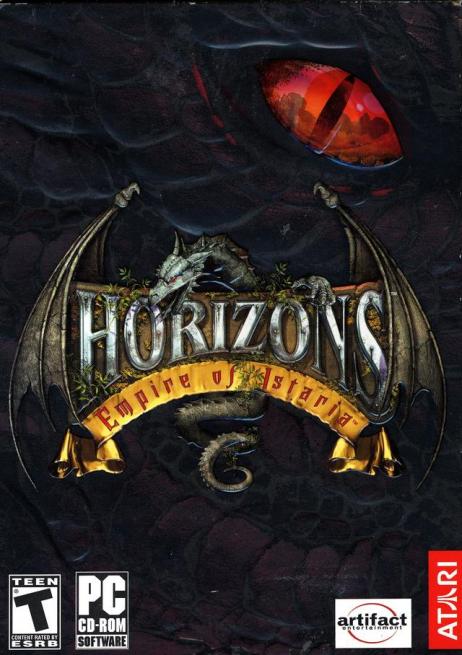Horizons: Empire of Istaria Preview
-
Category: PreviewsHits: 5110

Article Index
Page 2 of 2
Our first destination was a floating island, where David pointed out another floating island off in the distance. Such physics hint to the advantage of flight, and David showed me how his dragon character could indeed fly. This ability is not automatic, David explained, but instead becomes more advanced as a dragon progresses through "rites of passage". Dragon characters will begin as a juvenile (which cannot fly) and will have to complete a rite of passage in order to ascend to adulthood. Once an adult, a dragon has a limited flight ability and is able to use its breath weapon. A second rite of passage will cause an adult dragon to become ancient and grant variable breath weapon effects and a more advanced flight ability. Next, David brought me to an area where another character had begun building some sort of large structure, most likely a keep or castle. To introduce me to the mechanics of housing, David handed me a huge number of resources and asked me to contribute them to a tower being built on the outskirts of the building. Once I clicked on the tower, a window was displayed that showed exactly how many resources the building currently had and how many more it needed to be finished. I allotted the needed number of resources and contributed them. Seconds later, the tower stood before me. At this point, Bowman explained that anyone can contribute to a building in construction, and that the owner of the building can leave money on the structure so that each contribution can be paid accordingly. This provides a money-maker for those characters who have a surplus of resources and would like to donate them to a random building. Additionally, anyone who contributes resources to a structure gets their name inscribed on it. Very cool, indeed.
The next stop introduced me to something called a "blight maelstrom", which David explained is under control by the Withered Aegis, a common enemy for all races in the game. These maelstroms will appear throughout the world from time to time, although they will not be completely random. Each one will be placed by a server admin and will be constructed as part of a dynamic ongoing storyline in the game. David explained that because the world is so dynamic, areas like dungeons can be added on-the-fly and may only be found when a player stumbles upon a hole in the ground that wasn't there previously.
Our final location was the Dwarven capital of Aughundell, which resides underneath a mountain. This was our first underground area, and it was a pleasant surprise to see no loading screen as I ran my character down into its depths. After exploring a bit, David showed me a quick way to return to the initial town we were at. By clicking the "recall" button, you can instantly teleport your character to the last shrine you were bound at. There is a few second delay from the time you press the button to the time you actually teleport, however, so evading death will not always be a foolproof option.
Once back at the beginning area, David concluded the meeting. From what I saw during this demonstration and the time I've spent exploring the world since then, Horizons looks to be heading in a fantastic direction. The game possesses fluid graphics that can easily compete with any other game to date, a large selection of character creation and advancement options, intricate crafting and combat systems, an array of player housing choices, and a huge world to explore (100 km x 100 km!). Because of all these things, Horizons will definitely prove to be a serious contender in the world of MMORPGs.


